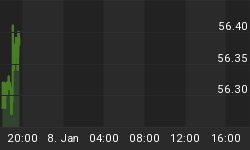In a gold-based monetary system, every asset is ultimately backed by gold. This does not mean that every debtor (including banks) keeps the full amount of its liability in gold coin just lying around. Why would one bother to borrow if one did not need the money?
It means that every asset generates a gold income and every asset could be liquidated for gold, if necessary. If a debtor declares bankruptcy, the creditor may take losses. But he can rely on the gold income stream for each asset or if need be he can sell the asset for gold.
In a gold-based monetary system, money is gold and gold is money. Money cannot disappear; it does not go "poof". Bad credit can be defaulted and must be written off. But money merely changes hands.
In a gold system, the promise of the gold coin is the only reason why anyone extends credit in the first place. Since 1913, there was a step-by-step evolution to our present irredeemable paper system. Now creditors are forced to accept the government's scrip as payment in full. It continues to work (for the moment) partly because of inertia, but mostly because there is (still) good credit behind the dollar.
Let's look deeper at what backs the money in the present irredeemable paper system. Start by considering this brief anecdote. Joe buys some equipment from John, to be paid Net 30. We say that Joe owes John $10,000. Next month, Joe comes back and gives the money to John. Joe is out of debt, but has the debt been extinguished?
No. The debt has been transferred. Now the Federal Reserve owes John the money! Surprised? Don't be.
The dollar is the liability of the Fed.
The Fed, like every bank, must balance liabilities and assets. There is even a technical term for when they have liabilities without matching assets. "Bankrupt." How does the Fed itself balance its liabilities?
The Treasury bond is the asset of the Fed.
Getting back to John, he deposits the money in the bank. The result is that the bank owes John the money, and the Fed owes the bank the money. The banks will typically buy Treasury bonds because they are "safe" and they pay a yield. In this case, the Treasury owes the bank the money.
Notice that whether the bank holds Treasury bonds directly, or whether it holds dollars that are the liability of the Fed backed by Treasury bonds as the asset, the Treasury bond ultimately backs the bank. And thus the Treasury bond ultimately back's John's asset, which is the deposit account.
The same principle holds true for other assets. A stock (equity) is valued based on the expected flow of dollars it will generate in the future. In addition, every company is obliged to hold dollars in a bank to cover payroll, pay suppliers, etc. Few companies could survive one minute past the default of their banks on these deposit accounts.
If this all seems perverse, that is because it is! The dollar is backed by the Treasury bond, and the Treasury bond is paid in dollars. It is circular, self-referential, and it is a ponzi scheme.
Under gold, the metal itself is the risk-free asset. This is not a mere definition, but an observation about reality. Gold simply is. It is not a promise and therefore cannot default. But under paper, the Treasury bond is defined as the risk-free asset. Obviously, one cannot eliminate risk by defining it out of existence.
It is important to emphasize that if a party's asset goes bad--especially with the leverage employed today--it will be forced to default on its liability. By the design of the system, its financial assets are someone else's liabilities (and its other assets depend on the liabilities of the Treasury). The ultimate "someone else" is the Treasury in all cases. When they default, all financial assets will be wiped out. This means all debtors will default. This means all creditors will take total losses. Creditors include not only corporate employers, but savers, pensioners, annuitants, etc.
The next time someone blurts out that the dollar works just as well as gold (or better than gold!), an explanation of this should shut him up.
















